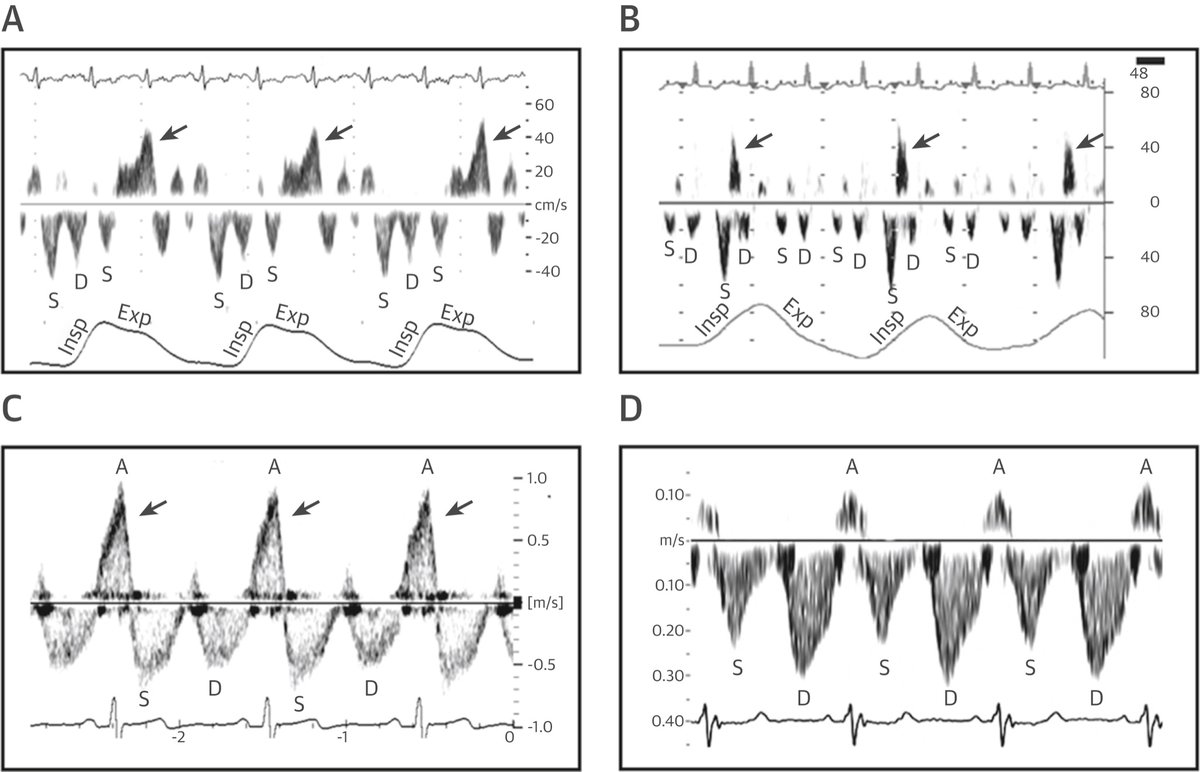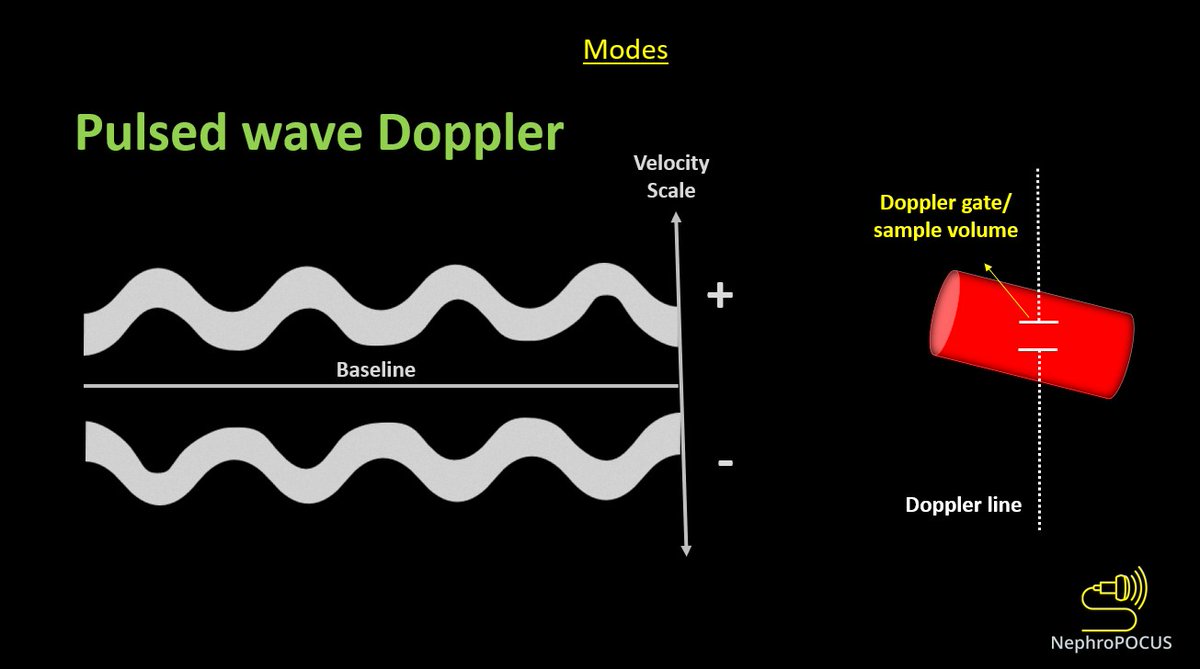
A short 🧵 on hepatic vein #VExUS and key pathologies
From: jacc.org/doi/10.1016/j.…
1/ HV Anatomy & Normal Flow Profile, respiratory variation (forward flow [S,D] ⬆️ during inspiration)
Click ‘ALT’ for normal waveform description
#POCUS #MedEd #Nephrology #IMPOCUS #FOAMed
From: jacc.org/doi/10.1016/j.…
1/ HV Anatomy & Normal Flow Profile, respiratory variation (forward flow [S,D] ⬆️ during inspiration)
Click ‘ALT’ for normal waveform description
#POCUS #MedEd #Nephrology #IMPOCUS #FOAMed

2/ A. Tricuspid regurgitation: Systolic flow reversal
B. Tricuspid stenosis: prolonged deceleration time of the D-wave + prominent A-wave
Click ‘ALT’ for further description
#POCUS #VExUS
B. Tricuspid stenosis: prolonged deceleration time of the D-wave + prominent A-wave
Click ‘ALT’ for further description
#POCUS #VExUS

A. Constrictive pericarditis: expiratory ⬇️ in tricuspid flow & RV filling with associated flow reversals on HVD
B. Restrictive cardiomyopathy: prominent D reversals during inspiration
C. ⬆️RVEDP: prominent A-wave
D. RV systolic dysfunction: ⬇️ S-wave
‘ALT’ for description (A&B)
B. Restrictive cardiomyopathy: prominent D reversals during inspiration
C. ⬆️RVEDP: prominent A-wave
D. RV systolic dysfunction: ⬇️ S-wave
‘ALT’ for description (A&B)

4/
(A) Atrial fibrillation: absent A-wave, blunted or absent S-wave
(B) Atrioventricular dissociation: cannon A-waves
‘ALT’ for further description
#POCUS #VExUS
(A) Atrial fibrillation: absent A-wave, blunted or absent S-wave
(B) Atrioventricular dissociation: cannon A-waves
‘ALT’ for further description
#POCUS #VExUS

5/
(A) Severe pulmonary HTN: HVD demonstrates a prominent A-wave (arrows) + an attenuated or absent D-wave.
(B) COPD: increase in forward flow velocities during inspiration with merging of the waveforms and loss of distinct S and D waves (arrows).
‘ALT’ - further description
(A) Severe pulmonary HTN: HVD demonstrates a prominent A-wave (arrows) + an attenuated or absent D-wave.
(B) COPD: increase in forward flow velocities during inspiration with merging of the waveforms and loss of distinct S and D waves (arrows).
‘ALT’ - further description

6/
(A) obesity: (fatty liver) dampening of waveforms with a biphasic flow pattern showing forward S and D waves with no A- and V-wave reversals.
(B) cirrhosis: low velocity monophasic forward flow and no reversals
Click ‘ALT’ for further description
#POCUS #VExUS
End of 🧵
(A) obesity: (fatty liver) dampening of waveforms with a biphasic flow pattern showing forward S and D waves with no A- and V-wave reversals.
(B) cirrhosis: low velocity monophasic forward flow and no reversals
Click ‘ALT’ for further description
#POCUS #VExUS
End of 🧵

• • •
Missing some Tweet in this thread? You can try to
force a refresh














